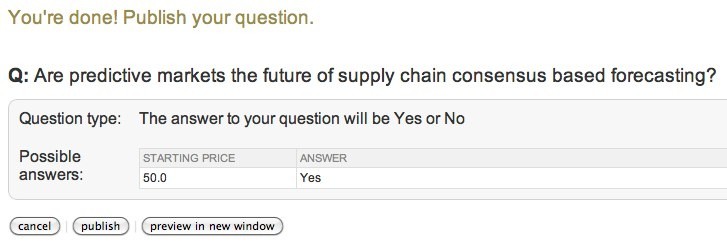Creating a Predictive Market Demo With Inkling Markets
Executive Summary
- What are Predictive Markets?
- The basics of Predictive Markets and supply chain forecasting.
 <br ” />What Are Predictive Markets?
<br ” />What Are Predictive Markets?
Predictive markets cover the study of obtaining information from many individuals that result in a better future forecast than any one individual. They come to supply chain from finance and are based on many of the concepts which are the backbone of trading systems. Wikipedia has the following definition of them.
See our references for this article and related articles at this link.
Prediction markets (also known as predictive markets, information markets, decision markets, idea futures, event derivatives, or virtual markets) are speculative markets created for the purpose of making predictions. Assets are created whose final cash value is tied to a particular event (e.g., will the next US president be a Republican) or parameter (e.g., total sales next quarter). The current market prices can then be interpreted as predictions of the probability of the event or the expected value of the parameter. Prediction markets are thus structured as betting exchanges, without any risk for the bookmaker. People who buy low and sell high are rewarded for improving the market prediction, while those who buy high and sell low are punished for degrading the market prediction. Evidence so far suggests that prediction markets are at least as accurate as other institutions predicting the same events with a similar pool of participants. – Wikipedia
The Basics
Several important considerations are necessary for a predictive market to work. They include the following:
- The right individuals or groups get to participate in the predictive market
- The technology used enables, rather than disables, collaboration
- Individuals who have a higher forecast accuracy get their input increased as time passes and vice versa
Predictive Markets and Supply Chain Forecasting
Predictive markets have become one of the main leading ideas for improving consensus based forecasting in supply chain management at least in academics, although most people who work in supply chain have never heard of them.
 <br ” />Inkling Markets
<br ” />Inkling Markets
Inkling Markets is a company that offers predictive markets software, and I tip my hat to them by offering a very easy to use demo for 45 days that allows people to get to use and understand their software before they purchase.
I have taken screenshots from their demo to explain how the software works.
The Demo of Inkling Markets
They offer the following explanation of predictive markets, which I think is pretty good.
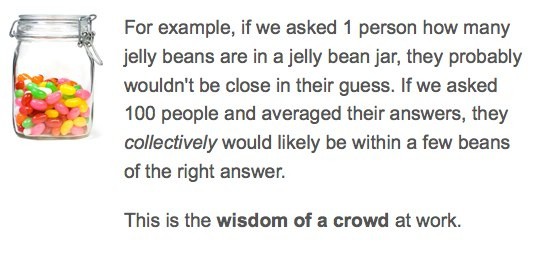 <br ” />After signing up I setup a question. The questions can be simple “yes/no” or can have multiple choice answers among others. I keep my question simply by asking a simple yes or no question.
<br ” />After signing up I setup a question. The questions can be simple “yes/no” or can have multiple choice answers among others. I keep my question simply by asking a simple yes or no question.
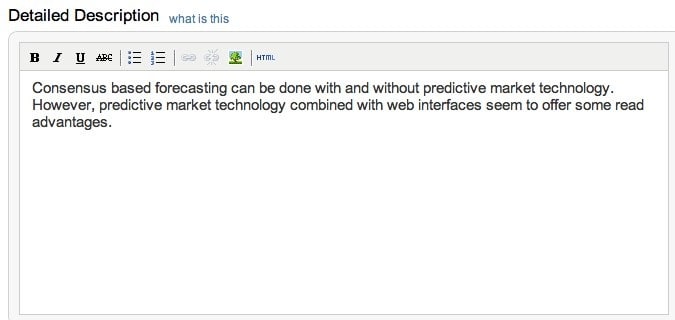 <br ” />I can list a brief description to ensure that the people that provide their input know exactly what I am asking.
<br ” />I can list a brief description to ensure that the people that provide their input know exactly what I am asking.
 <br ” />I can set a question end date.
<br ” />I can set a question end date.
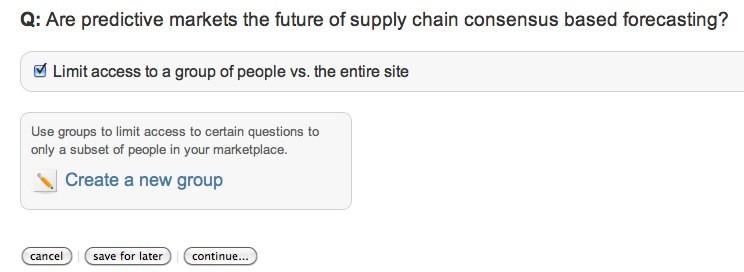 <br ” />I can also setup if I want the question to be open to the entire site or limited to just the people that I designate.
<br ” />I can also setup if I want the question to be open to the entire site or limited to just the people that I designate.
<br ” />Next, I am shown what the question will look like and the starting price. An important control for which individuals have the most say can be set by how much money each of them is given. Those with a better historical accuracy can be given a higher amount of initial money to “vote” with.
![]() <br ” />You can then invite others to vote. This would be where the different supply chain forecasters are added. All that is required to participate is an email address, and they create their login.
<br ” />You can then invite others to vote. This would be where the different supply chain forecasters are added. All that is required to participate is an email address, and they create their login.
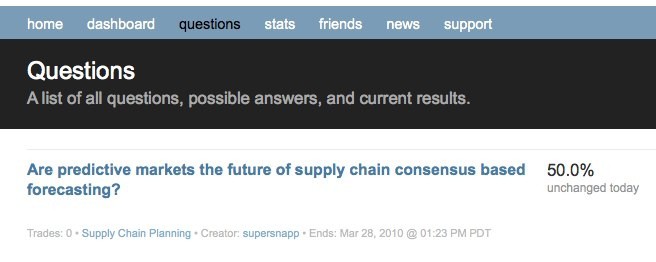 <br ” />This is what the question looks like to those that login and participate.
<br ” />This is what the question looks like to those that login and participate.
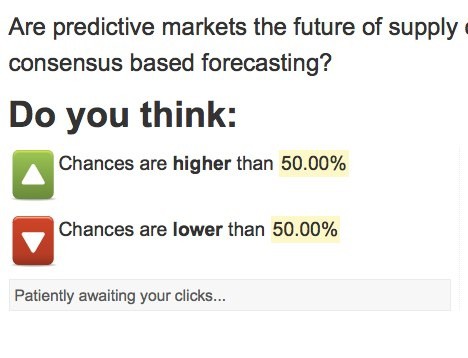 <br ” />This is the screen they are provided with. All they have to do is select the green or red button.
<br ” />This is the screen they are provided with. All they have to do is select the green or red button.
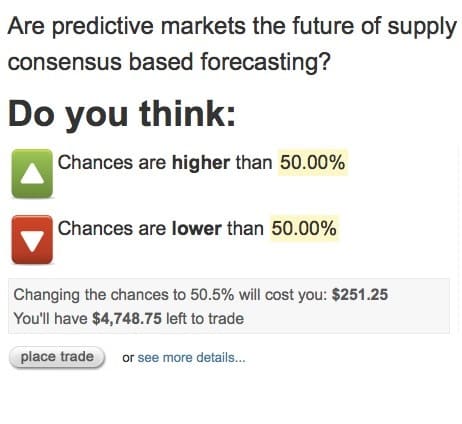 <br ” />The next screen shows them how much the vote will cost them.
<br ” />The next screen shows them how much the vote will cost them.
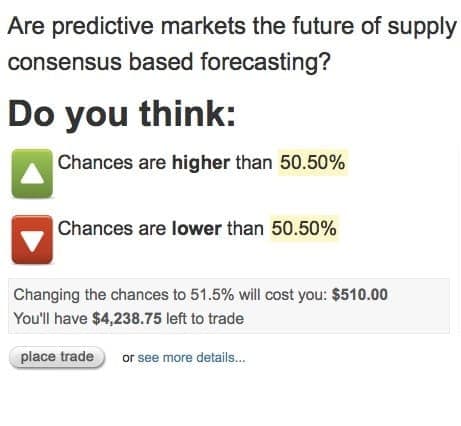 If they vote again, it will cost them more money. The idea is that the participants have some votes or forecasts to make, and a limited amount of money or votes to do so.
If they vote again, it will cost them more money. The idea is that the participants have some votes or forecasts to make, and a limited amount of money or votes to do so.
Conclusion
Inkling Markets was easy to set up, at least for an extremely simple model. Putting together a production-ready CBF system based upon Inkling Markets would require work in both setting up the software and connecting the results to an enterprise resource planning system or advanced planning system. For more details on how I am adding CBF consulting to my consulting offering see the link.
